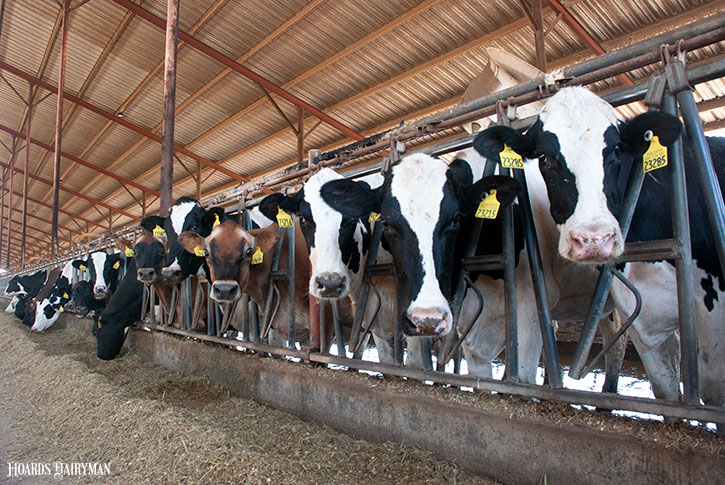
There are nickels, dimes, and quarters lying around on dairy farms all over the place. Of course, I’m figuratively speaking as there are no loose coins to actually be found. Yet, I’m convinced there are economic opportunities per hundredweight on the order of 25 cents or more to be found in your feeds.
In the past few years, I’ve been making a concerted attempt to follow in Norm St-Pierre and Bill Weiss’ footsteps. This is a tall task following the thought leadership of these academic and industry leaders. Learning from them and adding extensive experience with industry leading dairies and consultants, I’m increasingly motivated to help more dairies and agribusinesses uncover these margin opportunities by identifying factors contributing economically meaningful variation.
As I discussed in the April 10, 2022, Feeding Fundamentals column, “Don’t allow variation to be a cliché,” the term variation has been deemed a negative in our dairy nutrition tribal language. We need to change our language and understanding of this term. “Variation is an opportunity!” to borrow a phrase coined by my colleague Cliff Ocker.
Variation is attributable to different things, with some being really important to cash flow. The economically meaningful variation comes to light when enough data is collected and trends or impact factors are identified. This variation then becomes something that we can manage to our benefit.
For example, meaningful variation in feed conversion efficiency is attributable to both genetics and breed. We know that due to both research and experience. With this variation understood, we can then select cattle to improve feed conversion efficiency and improve your bottom line.
Speaking more to feed conversion efficiency, we know that starch digestibility is also a contributing factor. When feed conversion efficiency is suffering, and total tract starch digestibility (TTSD) is found less than, we then can continue working backward to find the factors contributing variance. Your silage and/or shelled corn may be factors here detracting from your herd’s performance.
Drilling into this point and following Mike Hutjens’ directions in the April 10, 2022, Dairy Rations column with what to do when “Faced with $7 corn,” checking fecal starch in high pens is a path to uncovering TTSD variation opportunities. Many dairies continue to find potential here, despite corn silage being in the silo for at least six months!

Figure 1 highlights the fact that in the past few weeks there are dairy herds that are still quite high in fecal starch and with challenged TTSD. I’ll diverge from Hutjens’ recommendations a bit, as I want to see dairies below 1% fecal starch. The top 15% of dairies are able to achieve this, hence I contend this is the goal.
Coming back to the factors contributing variation to starch digestibility in your cows, typically silage and high-moisture corn are feeding to their full potential by early spring. Yet, 2022 is different and dry ground corn looks to be contributing variation. To visualize the impact that may be having for your herd, take a look at Figure 2. Here, we see that rumen starch digestibility is substantially down for 2021 corn relative to the 2020 crop.

This conversation topic continues to come up weekly with dairies and nutritionists, from Texas to Wisconsin and California to New York. Last year’s corn was harder on average, with higher test weights, and may be contributing to less digestible total tract starch for some dairies. If feeding 10 pounds of ground corn, a 5- to 10-unit decrease in rumen starch digestibility and 2- to 3-unit decrease in TTSD can equate to several pounds less milk production per cow.
With exceptional margin opportunities ahead and expensive corn grain, bring this discussion point up with your nutritionist. Also ensure that you have a handle on your silage rumen starch digestibility, as there are quite a few silages out there that also aren’t feeding to their full potential.








